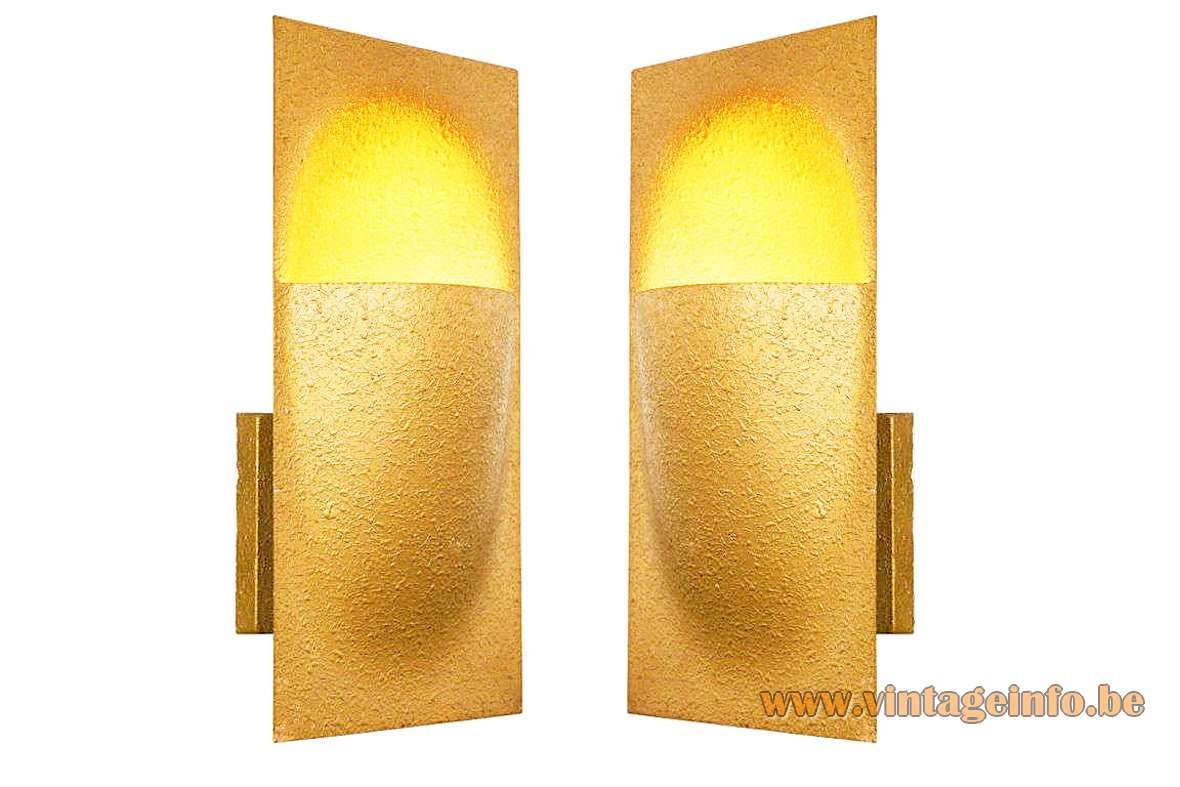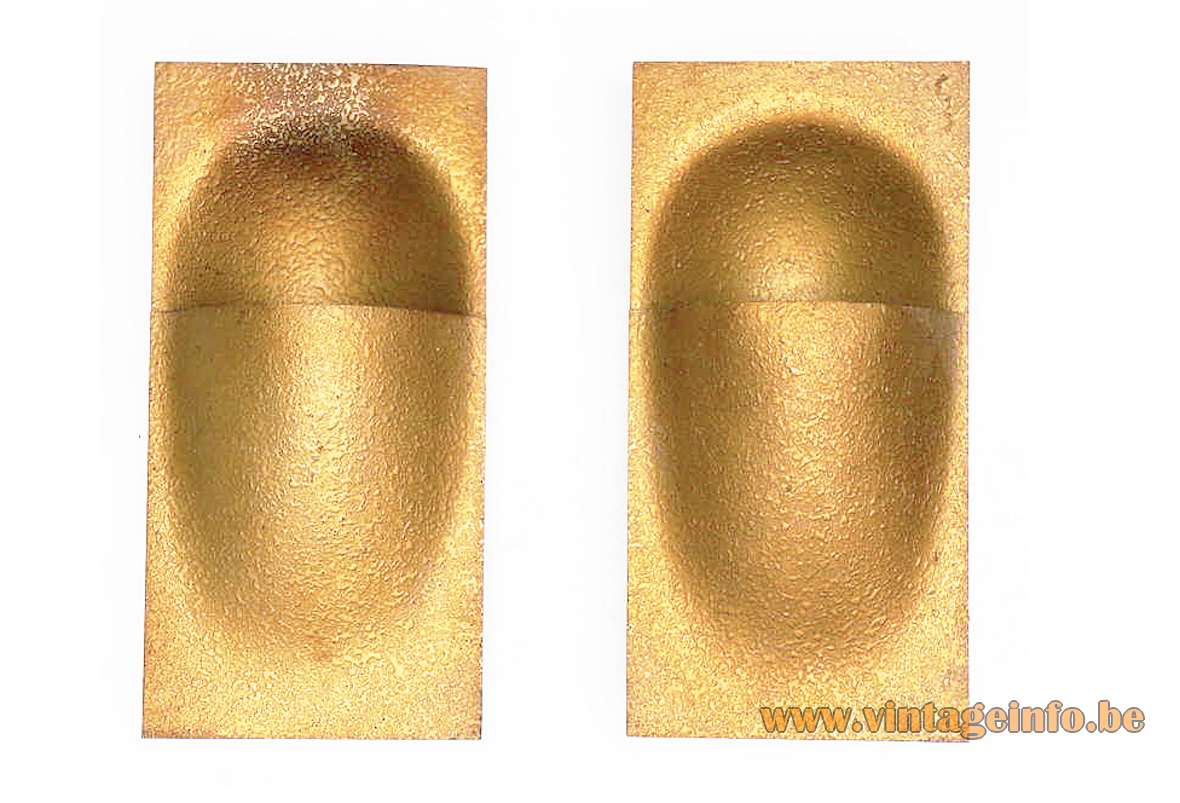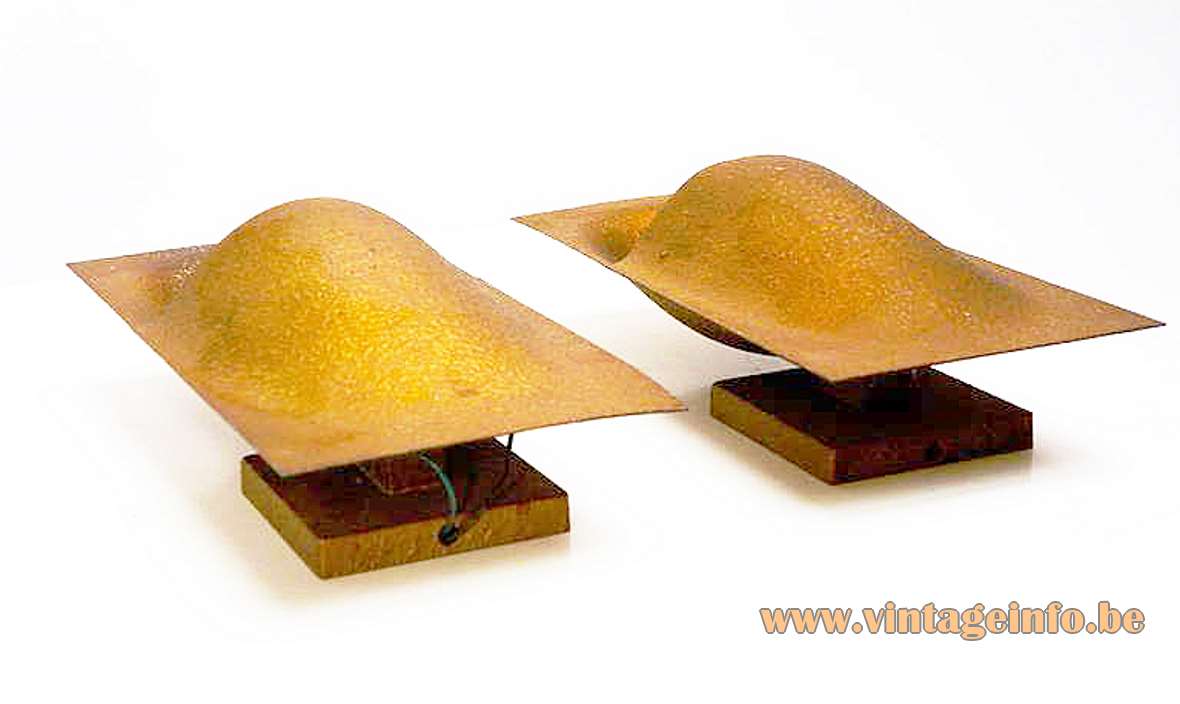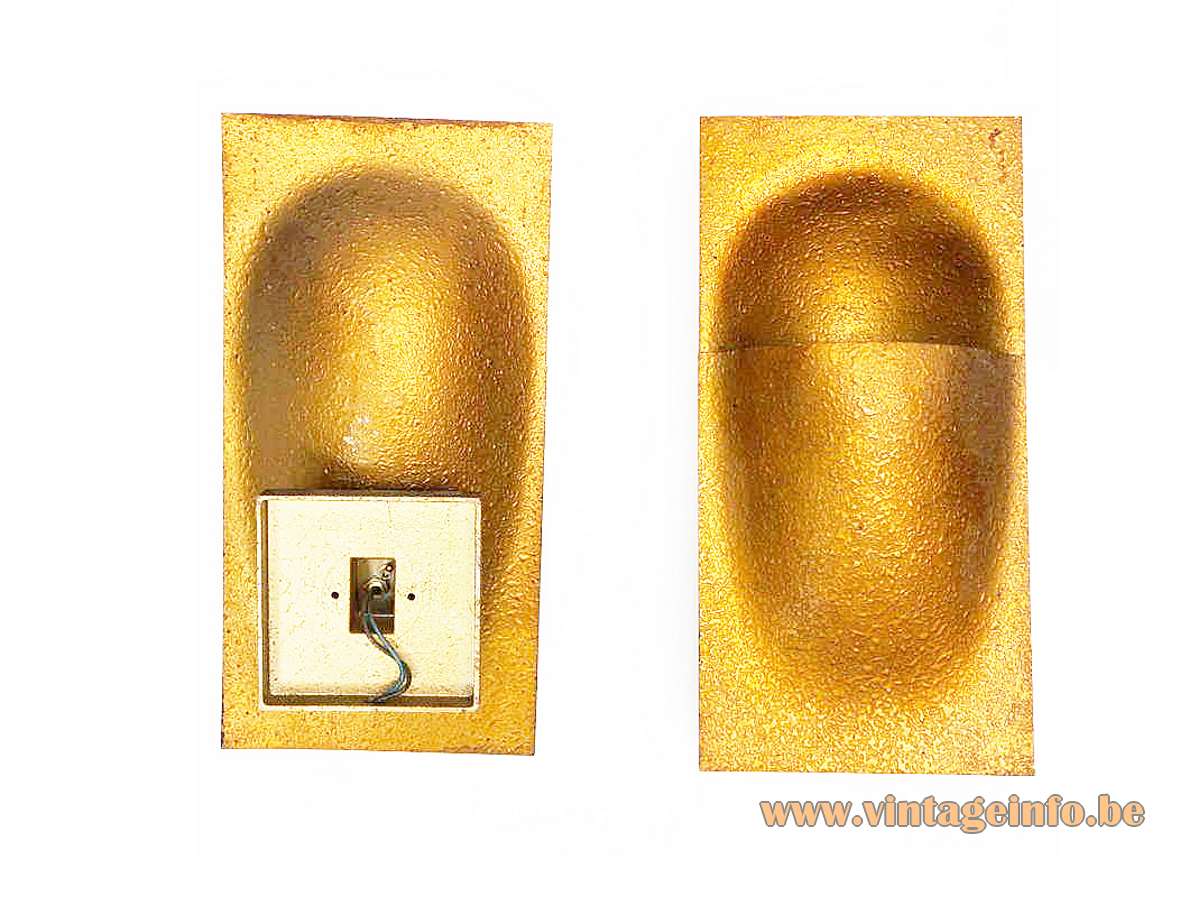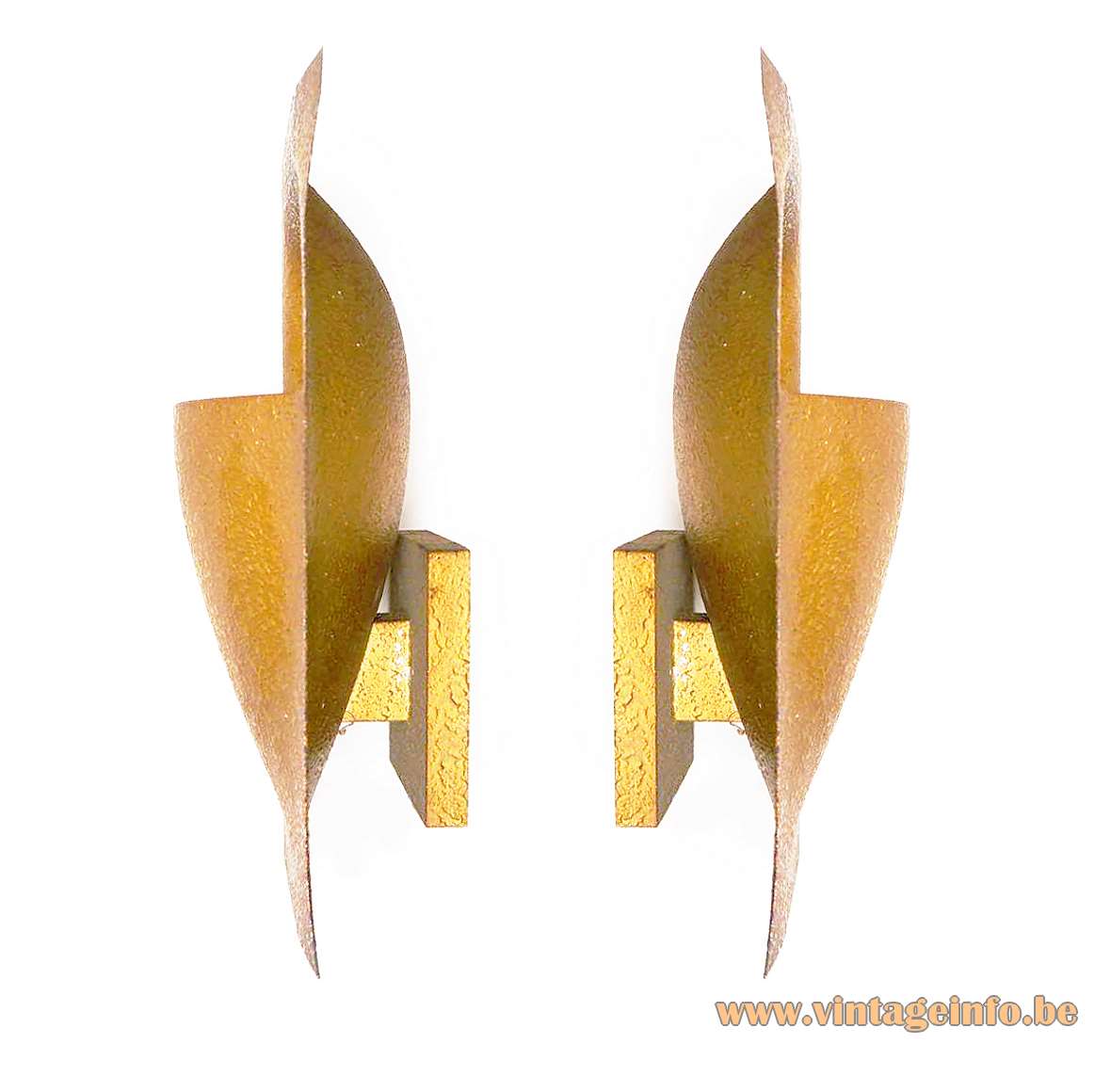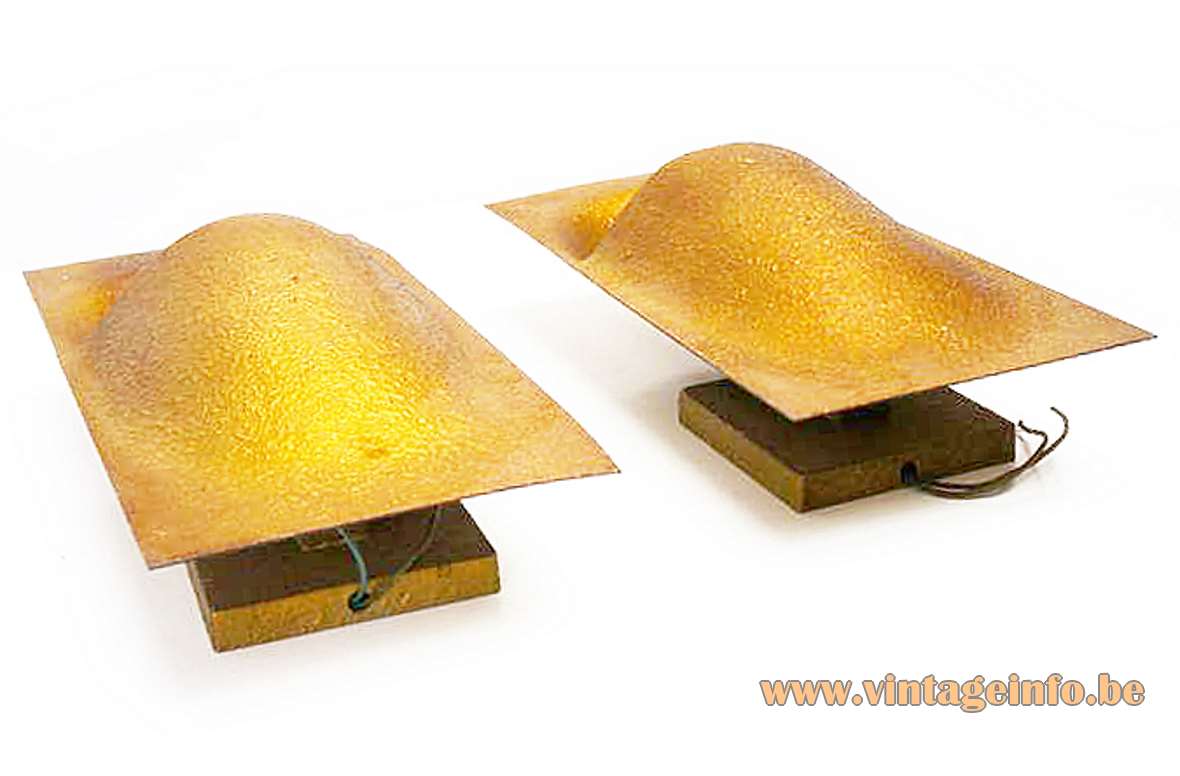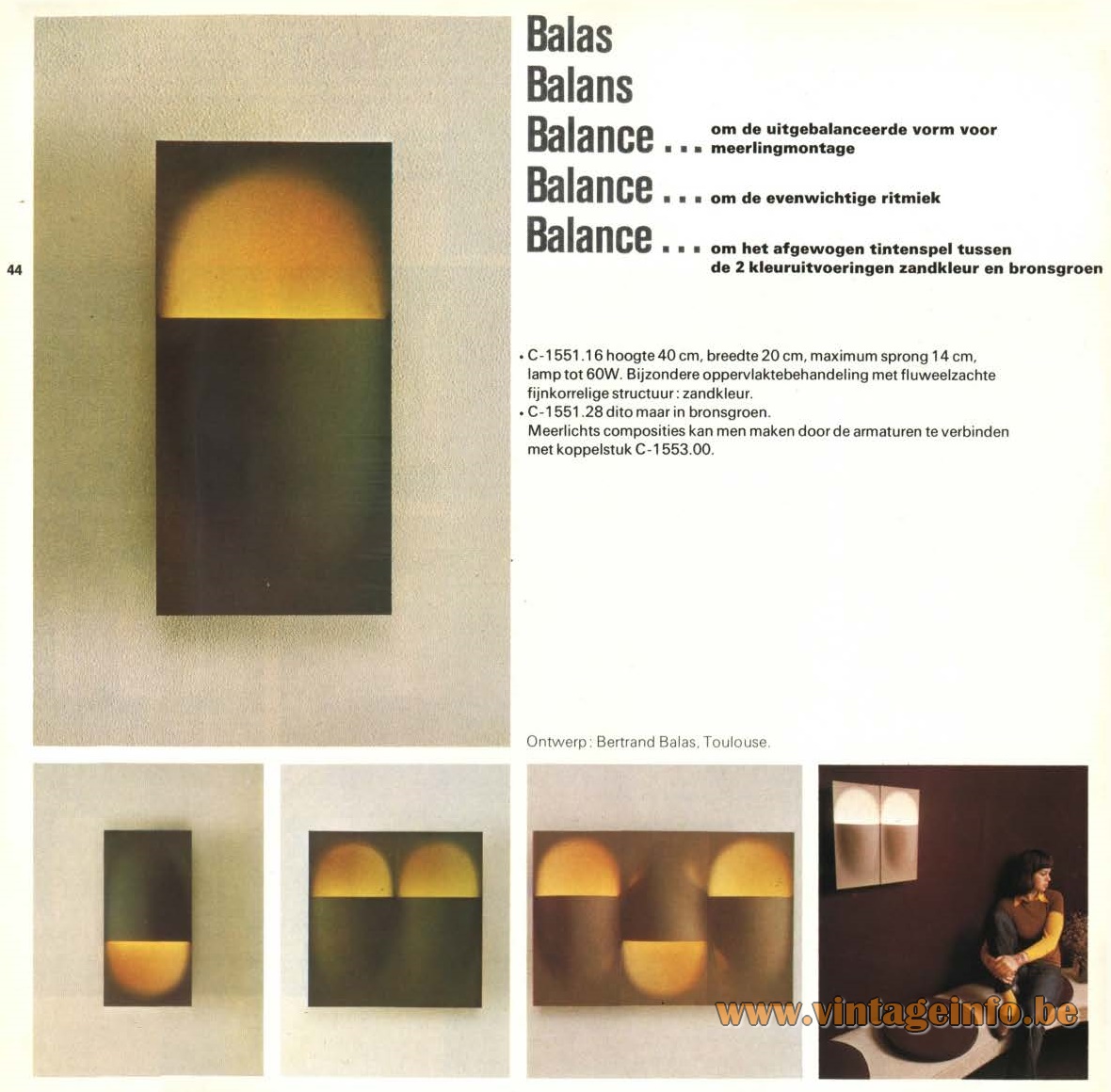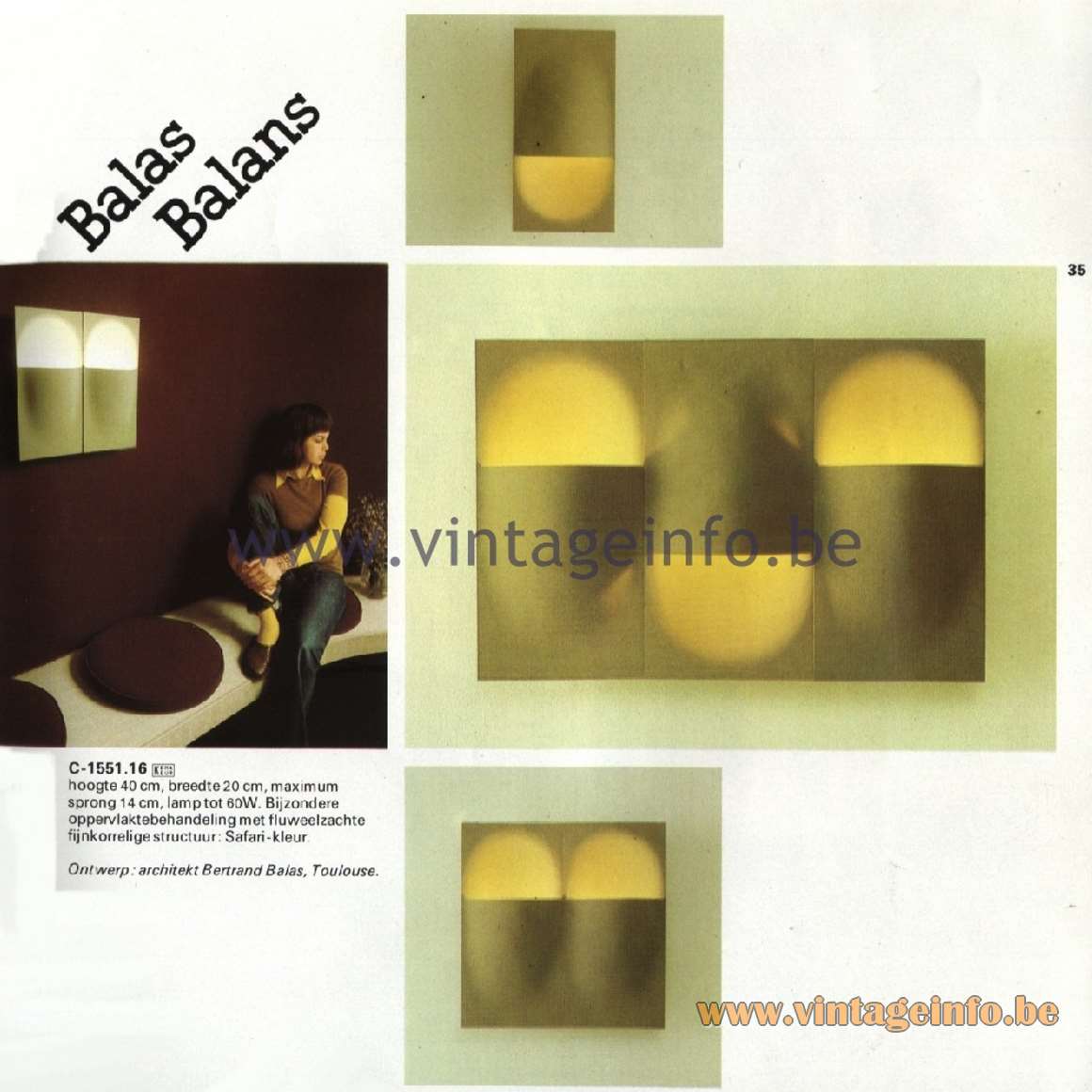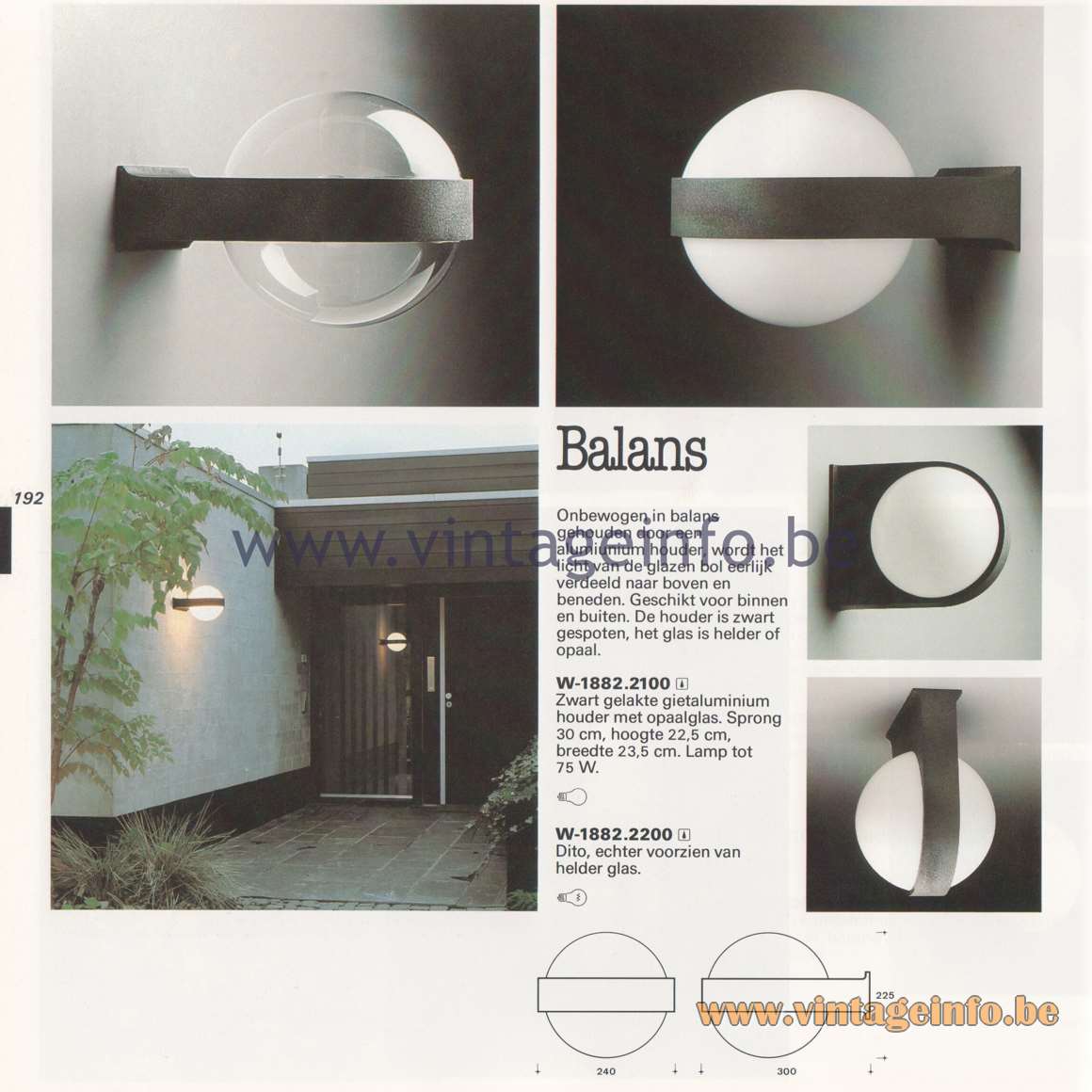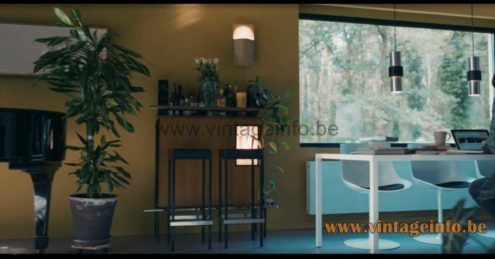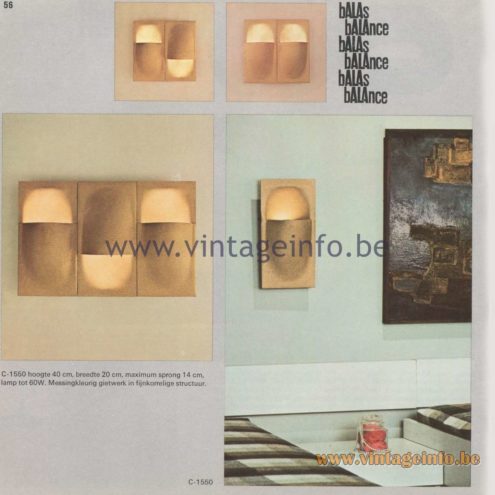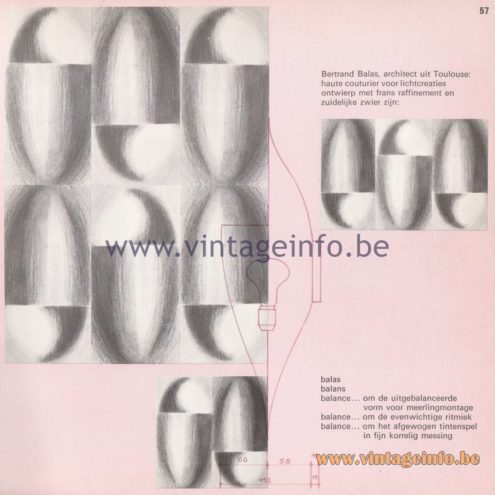Catalogue 9, 1972
Raak Balas, Balans, Balance Wall Lamps C-1551.16, C-1551.28
Catalogue 11, 1978
Raak Balans Wall Lamps C-1551.16
Catalogue 12, 1982
Raak Balans Wall Lamps W-1882.2100 and W-1882.2200
A Raak Balance wall lamp appears in the documentary series De Modernisten (The Modernists), broadcast by Klara radio, Belgium. Above the table, Raak pendant lamps model B-1198.
Raak Balance Wall Lamps
Materials: Rectangular gold “safari” coloured metal (brass) shell lampshades. White Bakelite or porcelain E14 sockets.
Height: 40 cm / 15.74”
Width: 20 cm / 7.87”
Depth: 14 cm / 5.51”
Electricity: 1 bulb E14, 1 x 40 watt maximum, 110/220 volt.
Any type of light bulb can be used, not a specific one preferred.
Period: 1960s – Mid-Century Modern.
Designer: Bertrand Balas (1935)
Manufacturer: Raak, Amsterdam, The Netherlands.
Other versions: The Raak Balance wall lamps exists with porcelain or Bakelite sockets. Also made in the colour bronze-green: model C-1551.28.
In the Raak catalogue 8 from 1968 the name of the lamp is Balance. Catalogue 9 says Balas, Balans, Balance. In catalogue 11 from 1978 it’s named Balans, the Dutch word for Balance. Numbers changed over the years: catalogue 8: C-1550, catalogue 9: C-1551, catalogue 11: C-1551.16. A catalogue 10 was never published. In catalogue 12 from 1982 the name Balans was given to another wall lamp, model W-1882.2100 and W-1882.2200, an outdoor wall lamp, as you can see on the left.
Bertrand Balas
Bertrand Balas was born in 1935 in Toulouse, France. Unfortunately, not much information to be found about the designer, decorator and architect.
Bertrand Balas also designed the Springfontein (Spring fountain) pendant lamp in 1969, in production since 1970. “Here Comes the Sun” was the original name, after the George Harrison song from The Beatles. But Balas was afraid to use the name in connection with copyright. Since 2015 the Here Comes the Sun lamp is back in production by the French company DCW éditions.
Another famous Bertrand Balas exist, born in 1956. He was active as a car racer in the late 1970s, 1980s, 1990s and 2000s.
Raak
The Dutch company “Raak Lichtarchitectuur” (Light Architecture) was founded in 1954 by Carel O. Lockhorn (18 June 1923 – 6 October 2004), a previous employee of Philips Lighting Eindhoven. Raak, which means “to hit” in Dutch, implies design which precisely “hits the nail on the head”.
Raak is best known for their organic modern design of the 1960s and 1970s which combined glass & metals for a sophisticated futuristic style.
The light company collaborated with several international designers and architects, including Bertrand Balas, Evert Jelle Jelles, Frank Ligtelijn, Ger Vos, Jan Jasper Fayer, Li Helo, Maija-Liisa Komulainen, Nan Platvoet, Nanny Still-Mackinney, Nico Kooi, Sergio Asti, Tapio Wirkala, Willem van Oyen and many others.
Raak also collaborated with other companies. They worked with the German Peill + Putzler for the Raak Globe lamps. Peill + Putzler produced the glass. They also sold lamps made by Peill + Putzler, such as a pendant lamp designed by Aloys Ferdinand Gangkofner. For the Raak Discus the glass was made by Bega, also a German company. For the Stalactites flush mounts a cooperation with the Belgian Val Saint Lambert was undertaken in the late 1950s. Raak also sold some lamps that were produced by Staff Leuchten (Staff & Schwarz Leuchtenwerke GMBH) from Germany and several other companies.
Carel Lockhorn
Carel Lockhorn sold the company in 1974 to ITT but remained a director until 1977. In 1980 Raak merged with BIS Lighting from Aalsmeer, also in The Netherlands and was renamed into BisRaak. In 1986 the Raak company became independent again. The company got a business appearance and only the colours white, black and grey were still processed.
In 1999, Raak merged with Artilite B.V. and Indoor B.V. and became CLA: Centrum voor Lichtarchitectuur B.V. in Drachten (Centre for Light Architecture). The Centre was founded by Egbert Keen. It was declared bankrupt on 19-05-2011.
Links (external links open in a new window)
Bertrand Balas in the Paris Design Agenda
DCW Editions – Here Comes The Sun pendant lamp
Bertrand Balas in the Driver Database
The Modernists documentary – Klara, Belgium – in Dutch
Vintageinfo
Balance wall lamps in the catalogue 8 from 1968
Balance wall lamps in the catalogue 9 from 1972
Balans wall lamps in the catalogue 11 from 1978
Springfontein pendant lamp in catalogue 11 from 1978 page 202
Springfontein pendant lamp in catalogue 11 from 1978 page 227
Catalogue 8, 1968
Balas, Balance Wall Lamps C-1550
Raak Amsterdam Light Catalogue 8, 1968
Balas, Balance Wall Lamps C-1550
Many thanks to Frank from Flowermountain.be for the pictures and the enthusiasm.
